Orwell Bridge: Digital model used to predict dangerous conditions
- Published
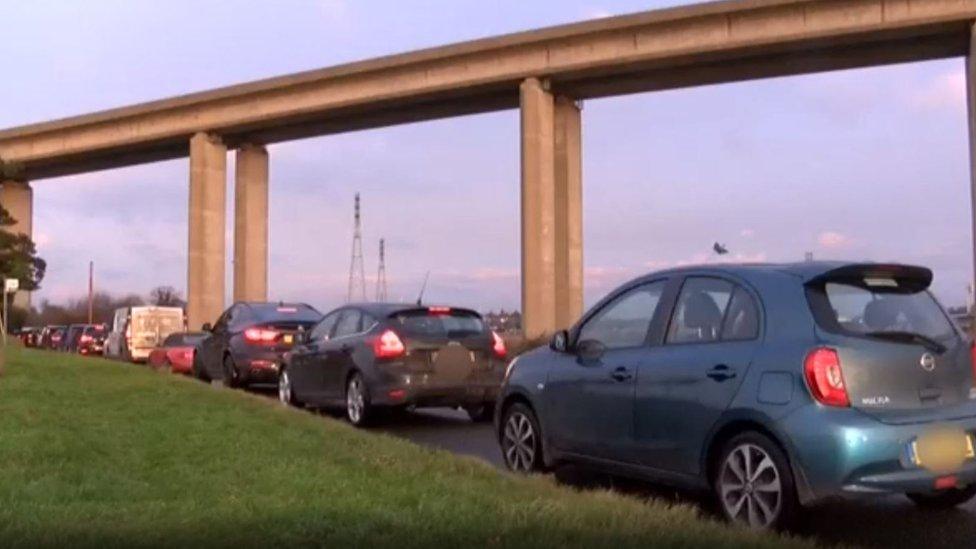
The Orwell Bridge in Ipswich has faced 12 serious closures in the past five years because of weather conditions, causing hold-ups in the area
A digital model of a major A14 bridge is being made to help assess when high winds make it unsafe for traffic.
Highways England has commissioned City, University of London for the nine-month study of accident risk due to winds on the Orwell Bridge at Ipswich.
The £25,600 project will analyse road surface, vehicle size, driving speed and other variables to model scenarios.
The exercise could also be extended to include experimental wind tunnel testing later this year.
The bridge has been shut in high winds for at least 88.5 hours in the last five years, which the Highways Agency said was down to "more severe weather events".
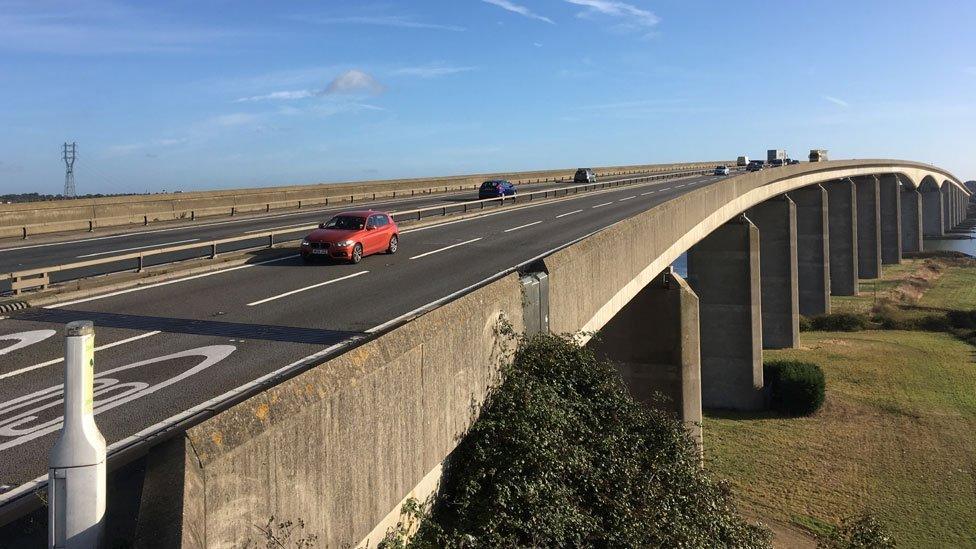
The study will model how certain wind conditions affect different vehicles
When the bridge closes, traffic has to be diverted through the centre of Ipswich, creating lengthy delays.
The idea of allowing cars on the bridge in winds while banning high-sided vehicles, including lorries using the Port of Felixstowe, was first proposed more than two years ago, said critics, who have long called for a trial.
The study results will influence the choice of new safety measures such as wind breaks, and when the bridge should be closed in cross winds, said the Local Democracy Reporting Service.
Mark Knight, business management team leader from Highways England, said the study would identify the wind speed beyond which accidents were likely to occur for different vehicles.
"This will give us useful information about the risk of vehicle accidents and about the efficiency of the existing traffic protocols," he said.
The study will also look at how a vehicle's load, its exposed surfaces, and its position on the bridge affect the level of risk of an accident.
The detailed model of the bridge, including vibration levels, is the most advanced wind modelling possible, said Mr Knight.
Last week, Suffolk County Council abandoned "unaffordable" plans for the proposed Upper Orwell Crossing road bridge to the south of the town centre,
- Published21 January 2019
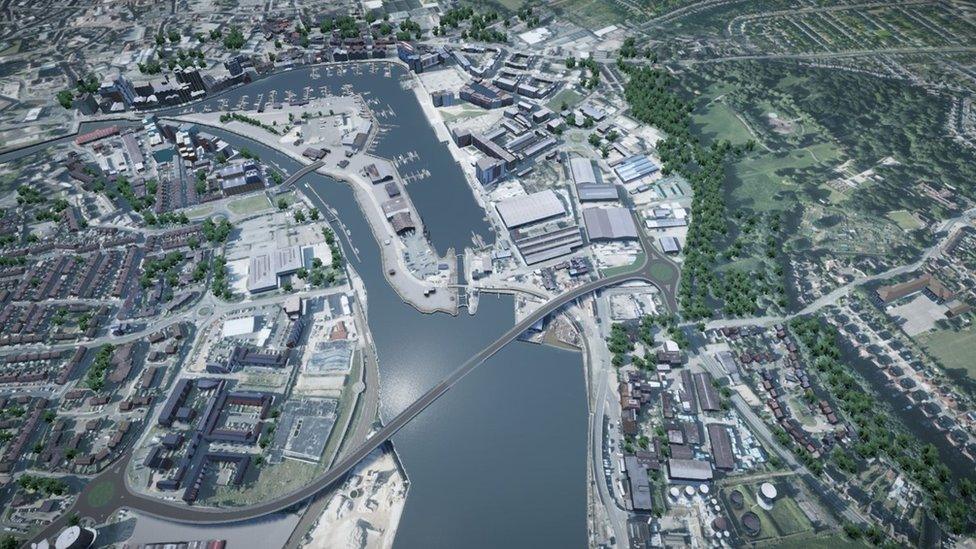
- Published24 November 2018
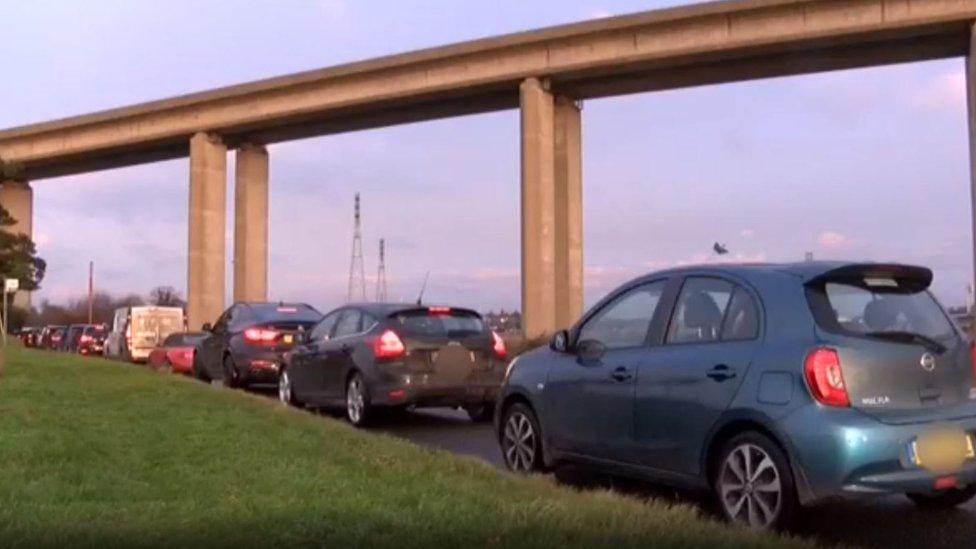
- Published29 June 2018
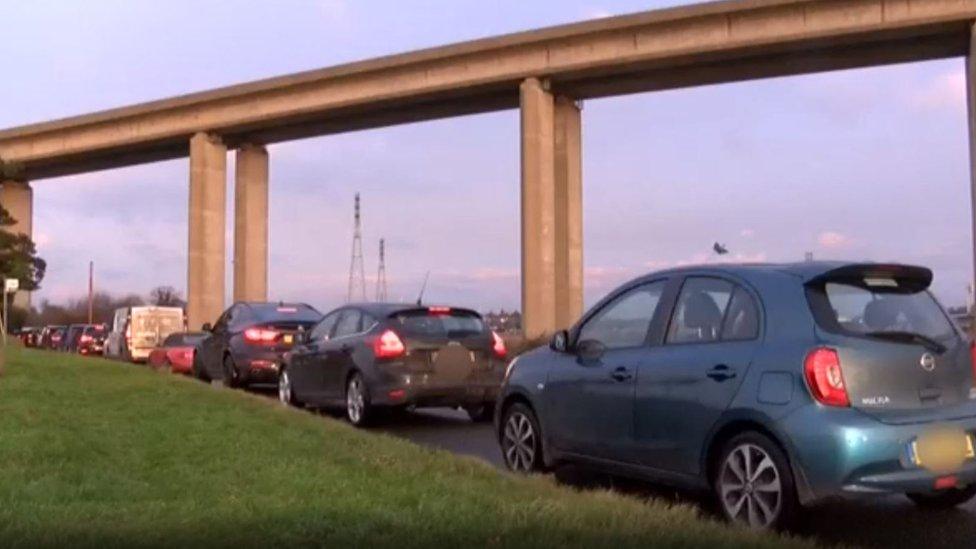
- Published27 January 2018
